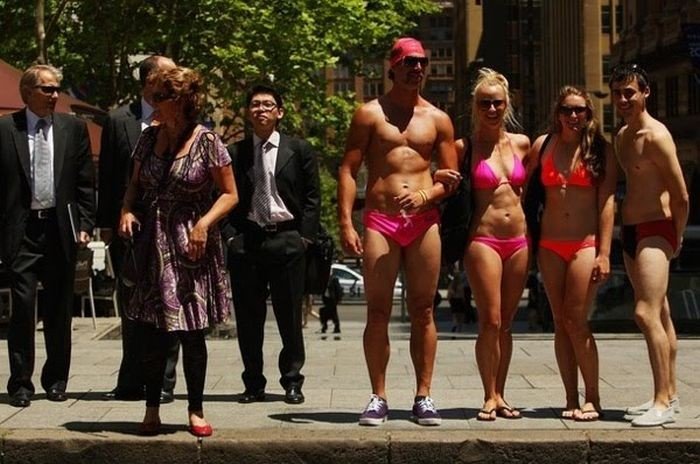|
|
Swimsuits Parade, Sydney, Australia
|
The Expedition of Humphrey Clinker was published in 1771 and its description of ladies’ bathing costume is different to that of Celia Fiennes a hundred years earlier:
The ladies wear jackets and petticoats of brown linen, with chip hats, in which they fix their handkerchiefs to wipe the sweat from their faces; but, truly, whether it is owing to the steam that surrounds them, or the heat of the water, or the nature of the dress, or to all these causes together, they look so flushed, and so frightful, that I always turn my eyes another way.
Penelope Byrde points out that Smollett’s description may not be accurate, for he describes a two-piece costume, not the one piece shift or smock that most people describe and is depicted in contemporary prints. His description does, however, tally with Elizabeth Grant’s description of the guide’s costume at Ramsgate in 1811. The only difference is in the fabric the costumes are made of. Flannel, however, was a common fabric for sea bathing costumes as many believed the warmer fabric was necessary in cold water.
In the 18th century women wore "bathing gowns" in the water; these were long dresses of fabrics that would not become transparent when wet, with weights sewn into the hems so that they would not rise up in the water. The men's swim suit, a rather form-fitting wool garment with long sleeves and legs similar to long underwear, was developed and would change little for a century.
|
|









